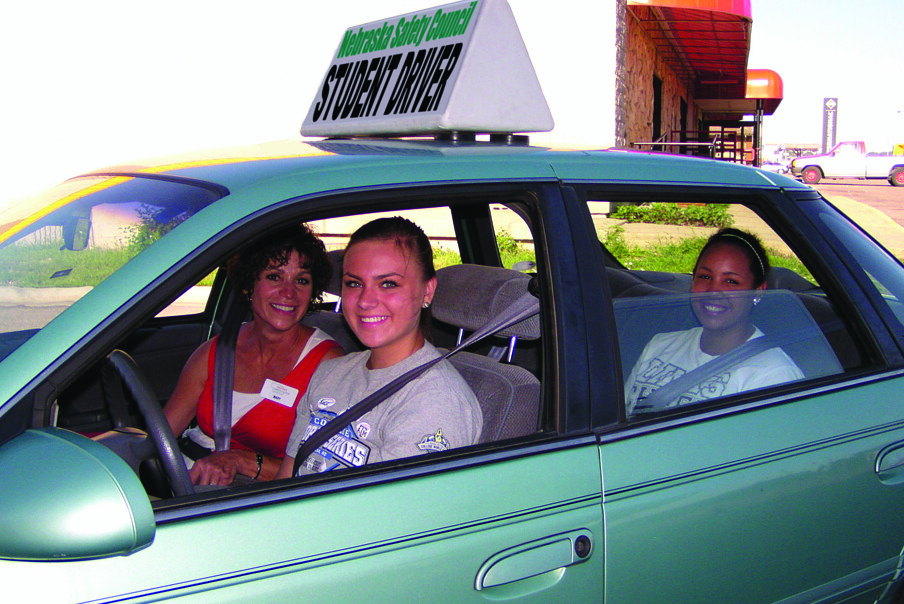
As summer approaches, parents of 14- and 15-year-olds are getting emails and postcards urging them to sign up their offspring for driver’s education before summer classes fill up.
Some families might wonder if it’s worth it. Driver’s education comes with a price tag of $265 to $350 in Omaha and Lincoln. Nebraska law doesn’t actually require teens to take driver’s ed before getting their first operator’s permit, they could instead submit a log documenting 50 hours of adult-supervised driving practice.
Duane Shell and Ian Newman of the Nebraska Prevention Center for Alcohol and Drug Abuse in the College of Education and Human Sciences at the University of Nebraska-Lincoln are nationally recognized experts who have studied the question. They say not only does driver’s education significantly improve driver safety during the highest-risk period of ages 16 to 18, its protective effects continue at least until drivers reach their mid-20s.
Here they answer questions about the benefits and history of driver’s education.
What does your research show?
Shell: We followed more than 150,000 Nebraska youth who obtained their provisional operators permit between 2003 and 2010. We found that in their first year of driving, those who had not taken driver’s education were 75 percent more likely to get a traffic ticket, 24 percent more likely to be involved in a fatal or injury accident and 16 percent more likely to have an accident.
Don’t those benefits fade over time?
Shell: In an as-yet unpublished study, we looked at eight years of data from a cohort of about 31,000 who obtained their provisional operators permits in 2003 or 2004. We found that a higher percentage of those who had taken driver’s education made it to their 24th or 25th birthdays without traffic tickets and crashes. We also found that, with each year that passes, their risk of getting a ticket or a crash declines faster than it does for those who didn’t take driver’s education. In other words, instead of diminishing, the effect of driver’s education is widening, eight years after actually having taken the class. It’s really fairly remarkable.
In the 1970s, most schools in Nebraska included driver’s education in their curriculum. Now few do. Why did driver’s education fall from favor?
Shell: A 1983 study attempted a randomized, medical-style trial of the effects of driver’s education and was unable to demonstrate conclusively that driver’s education was beneficial. The study’s findings since have been questioned, in part because of problems with the methodology, but by that time it had become accepted that driver’s ed doesn’t work. At the same time, many schools were facing budget cuts and increased pressure to improve academic achievement. Things like driver’s ed become easy to cut, especially if we’ve got this big study that says it doesn’t work.
Newman: To do the sort of study we did here is labor intensive, long-term and requires significant (computing) power.
Shell: Insurance companies, however, never gave up on driver’s ed. Many offer premium discounts for those who have completed driver’s ed.
If driver’s ed is effective, wouldn’t there have been a noticeable increase in teen traffic injuries and deaths after many schools stopped offering it?
Shell: The decline of driver’s education in the schools coincided with a rather dramatic, continual drop across the board in traffic crashes and deaths largely due to mandatory seat belts and airbags and improvements in road engineering.
Newman: Changes in the environment, like guardrails and freeway barriers to prevent cars from crossing into oncoming traffic, people understand that intuitively. But what about some money for driver’s ed? It’s hard to demonstrate that driver’s ed prevented a specific crash.
Fred Zwonechek, director of Nebraska’s Office of Highway Safety, also pointed out that teen traffic crashes and tickets dropped significantly after Nebraska adopted its graduated licensing law that restricts young drivers until they gain more experience. Crashes involving 16-year-old drivers declined 55 percent from 2003 to 2015.
Are some kids denied the chance to take driver’s education because of the cost?
Shell: About 53 percent of young drivers take driver’s education. A higher percentage of girls than boys do it. There are way more white youth than non-white youth who take it. The ones who take driver’s ed have a higher median household income. And those in urban areas are more likely to take driver’s ed than those who live in rural areas.
Zwonechek said no state or federal funds are available to help low-income youth attend driver’s education, although some driver education programs offer full or partial scholarships for low-income students.
Can’t a parent successfully teach a teen to drive?
Newman: You could, if you took it very seriously. But I think the person who would fastidiously complete the driving log is the person who puts their kid into driver’s ed, actually.
Will driver’s education keep my child safe on the road?
Newman: Odds are yes.
Shell: We can’t guarantee it will, but the odds are in your favor.









